Simple Technique for Tracking Chloride Penetration in Concrete Based on the Crack Shape and Width under Steady-State Conditions
Abstract
:1. Introduction
2. Previous Research on Chloride Diffusion in Cracked Concrete
3. Analytical Model for Diffusion Coefficient Based on the Crack Shape
3.1. Shape of Crack Area with Roughness
3.2. Formulation of Diffusion
3.2.1. Anisotropic Diffusion Model
3.2.2. Isotropic Diffusion Model
4. Verification of the Model
4.1. Experimental Program
4.1.1. Concrete Preparation with Crack
4.1.2. Diffusion Coefficient under steady-state Conditions
4.2. Simulation with Varying Parameters
4.2.1. Roughness and Crack Density Effect
4.2.2. Reference Diffusion Coefficient Effect
4.3. Verification of the Proposed Model
4.3.1. Anisotropic Diffusion Model
4.3.2. Isotropic Diffusion Model
5. Conclusions
Acknowledgments
Author Contributions
Conflicts of Interest
References
- Park, S.S.; Kwon, S.J.; Jung, S.H. Analysis technique for chloride penetration in cracked concrete using equivalent diffusion and permeation. Const. Build. Mater. 2012, 29, 183–192. [Google Scholar] [CrossRef]
- Kwon, S.J.; Na, U.J.; Park, S.S.; Jung, S.H. Service life prediction of concrete wharves with early-aged crack: Probabilistic approach for chloride diffusion. Struct. Safe 2009, 31, 75–83. [Google Scholar] [CrossRef]
- Gerard, B.; Marchand, J. Influence of cracking on the diffusion properties of cement-based materials Part I: Influence of continuous cracks on the steady-state regime. Cem. Concr. Res. 2000, 30, 37–43. [Google Scholar] [CrossRef]
- Park, S.S.; Kwon, S.J.; Jung, S.H.; Lee, S.W. Modeling of water permeability in early aged concrete with cracks based on micro pore structure. Const. Build. Mater. 2012, 27, 597–604. [Google Scholar] [CrossRef]
- Thomas, M.D.A.; Bamforth, P.B. Modeling chloride diffusion in concrete: Effect of fly ash and slag. Cem. Concr. Res. 1999, 29, 487–495. [Google Scholar] [CrossRef]
- Saraswathy, V.; Muralidharan, S.; Thangavel, K.; Srinivasan, S. Influence of activated fly ash on corrosion resistance and strength of concrete. Cem. Concr. Compos. 2003, 25, 673–680. [Google Scholar] [CrossRef]
- Elfmaekova, V.; Spiesz, P.; Brouwers, H.J.H. Determination of the chloride diffusion coefficient in blended cement mortars. Cem. Concr. Res. 2015, 78, 190–1999. [Google Scholar] [CrossRef]
- Yoo, S.W.; Kwon, S.J. Effects of cold joint and loading conditions on chloride diffusion in concrete containing GGBFS. Const. Build. Mater. 2016, 115, 247–255. [Google Scholar] [CrossRef]
- Chen, J.W.; Fu, C.; Jin, N. Prediction of chloride binding isotherm for blended cement. Comput. Concr. 2016, 17, 655–672. [Google Scholar]
- Yoon, L.S.; Nam, J.W. New experiment recipe for chloride penetration in concrete under water pressure. Comput. Concr. 2016, 17, 189–199. [Google Scholar] [CrossRef]
- Song, Z.; Jiang, L.; Zhang, Z. Chloride diffusion in concrete associated with single, dual and multi cation types. Comput. Concr. 2016, 17, 53–66. [Google Scholar] [CrossRef]
- Song, H.W.; Cho, H.J.; Park, S.S.; Byun, K.J.; Maekawa, K. Early-age cracking resistance evaluation of concrete structure. Concr. Sci. Eng. 2001, 3, 62–72. [Google Scholar]
- Win, P.P.; Watanabe, M.; Machida, A. Penetration profile of chloride ion in cracked reinforced concrete. Cem. Concr. Res. 2004, 34, 1073–1079. [Google Scholar] [CrossRef]
- JSCE-Concrete Committee. Standard Specification for Concrete Structures; JSCE-Concrete Committee: Tokyo, Japan, 2007. [Google Scholar]
- Song, H.W.; Kwon, S.J.; Byun, K.J.; Park, C.K. Predicting carbonation in early-aged cracked concrete. Cem. Concr. Res. 2006, 36, 979–989. [Google Scholar] [CrossRef]
- Yokozeki, K.; Okada, K.; Tsutsumi, T.; Watanabe, K. Prediction of the service life of RC with crack exposed to chloride attack. Jpn. Symp. Rehabil. Concr. Struct. 1998, 10, 1–6. [Google Scholar]
- Pang, L.; Li, Q. Service life prediction of RC structures in marine environment using long term chloride ingress data: Comparison between exposure trials and real structure surveys. Const. Build. Mater. 2016, 113, 979–987. [Google Scholar] [CrossRef]
- Ishida, T.; Iqbal, P.O.; Anh, H.T.L. Modeling of chloride diffusivity coupled with non-linear binding capacity in cound and cracked concrete. Cem. Concr. Res. 2009, 39, 913–923. [Google Scholar] [CrossRef]
- Iqbal, P.O.; Ishida, T. Modeling of chloride transport coupled with enhanced moisture conductivity in concrete exposed to marine environment. Cem. Concr. Res. 2009, 39, 329–339. [Google Scholar] [CrossRef]
- Ishida, T.; Luan, Y.; Sagawa, T.; Nawa, T. Modeling of early age behavior of blast furnace slag concrete based on micro-physical properties. Cem. Concr. Res. 2011, 41, 1357–1367. [Google Scholar] [CrossRef]
- Maekawa, K.; Ishida, T.; Kishi, T. Multi-Scale modeling of concrete performance. J. Adv. Conc. Tech. 2003, 1, 91–126. [Google Scholar] [CrossRef]
- Maekawa, K.; Ishida, T.; Kishi, T. Multi-scale modeling of structural performance. Taylor Fr. 2009, 322–325. [Google Scholar]
- Korea Concrete Institute. Concrete Standard Specification-Durability Part; Korea Concrete Institute: Seoul, Korea, 2009. [Google Scholar]
- Andrade, C. Calculation of chloride diffusion coefficients in concrete from ionic migration measurement. Cem. Concr. Res. 1993, 23, 724–742. [Google Scholar] [CrossRef]
- Song, H.W.; Kim, H.J.; Lee, S.J.; Byun, K.J.; Park, C.K. Prediction of service life in cracked reinforced concrete structures subjected to chloride arrack and carbonation. In Proceedings of the 6th International Congress Global Construction: Ultimate Concrete Opportunities, Dundee, Scotland, 5–7 July 2005; pp. 767–776.
- Jacobsen, S.; Marchand, J.; Boisvert, L. Effect of cracking and healing on chloride transport in OPC concrete. Cem. Concr. Res. 1996, 26, 869–881. [Google Scholar] [CrossRef]
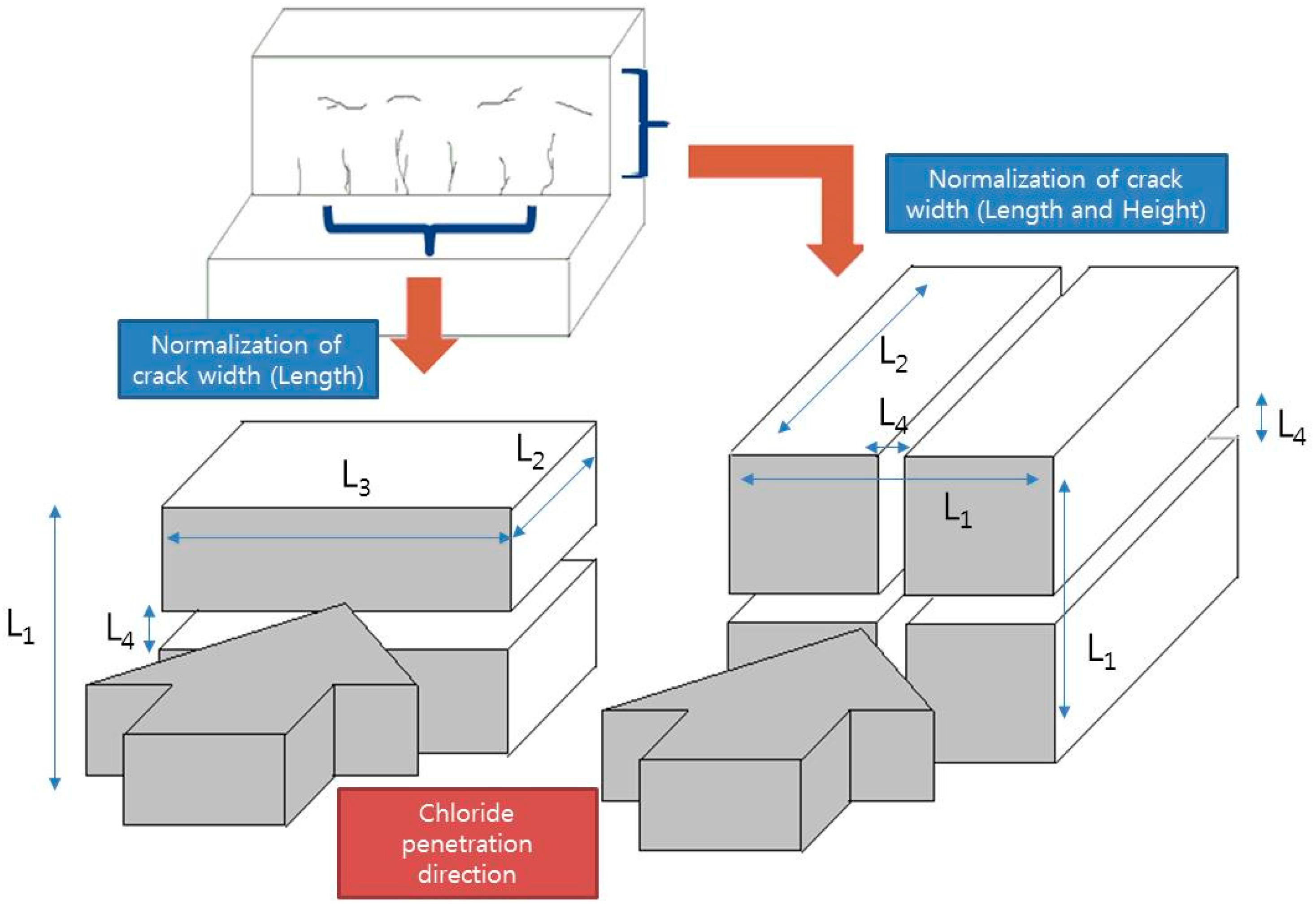

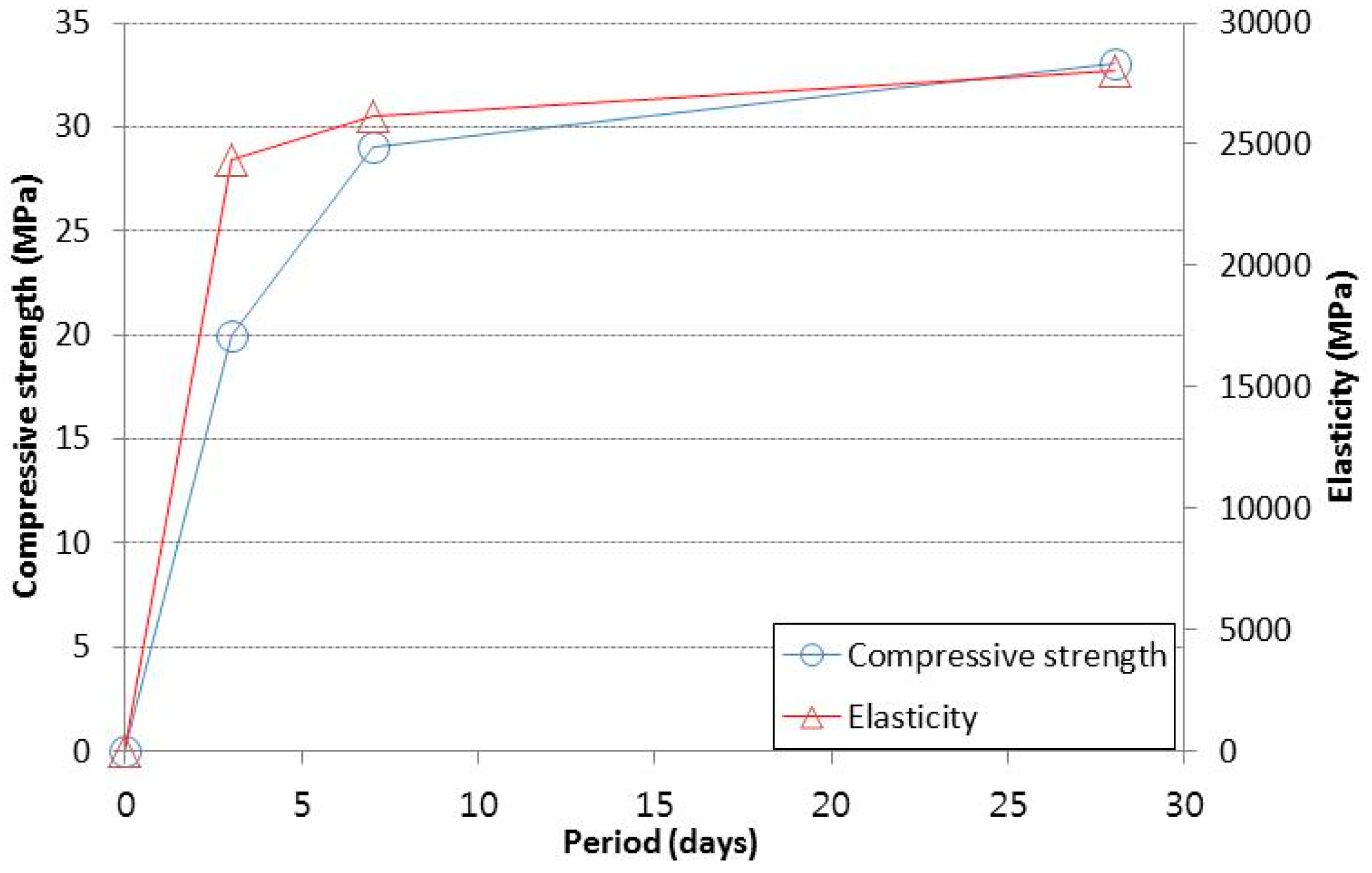
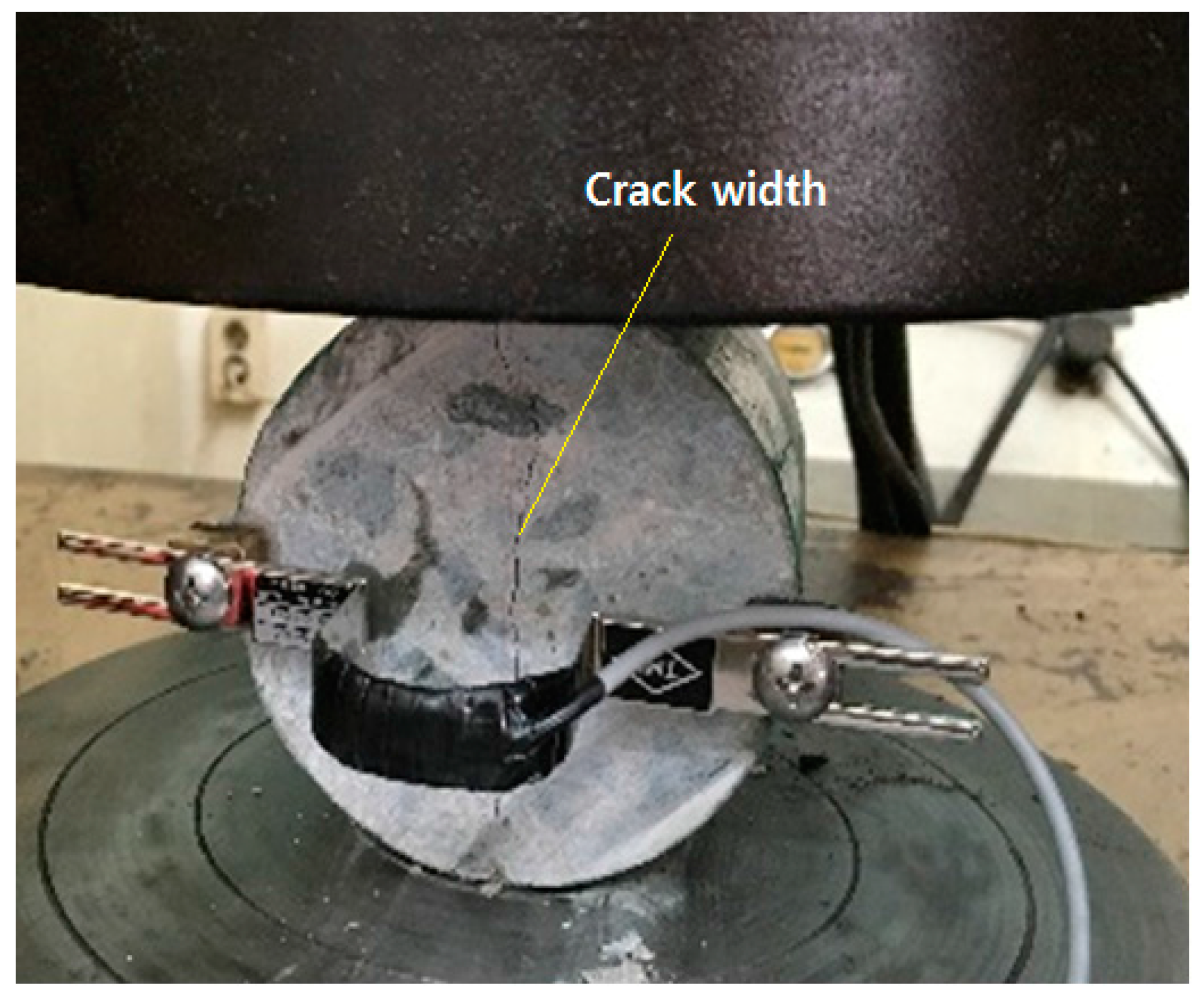
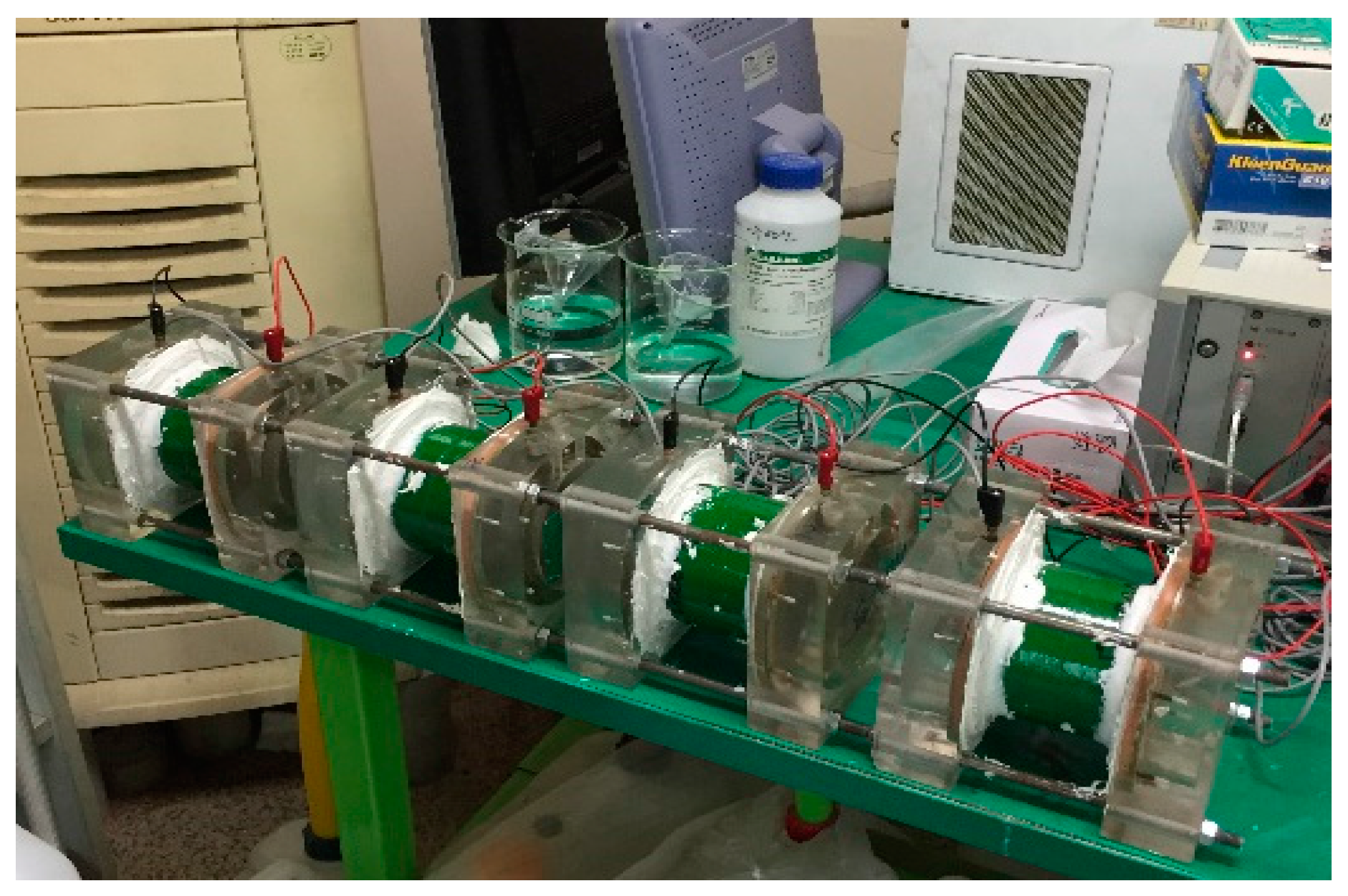
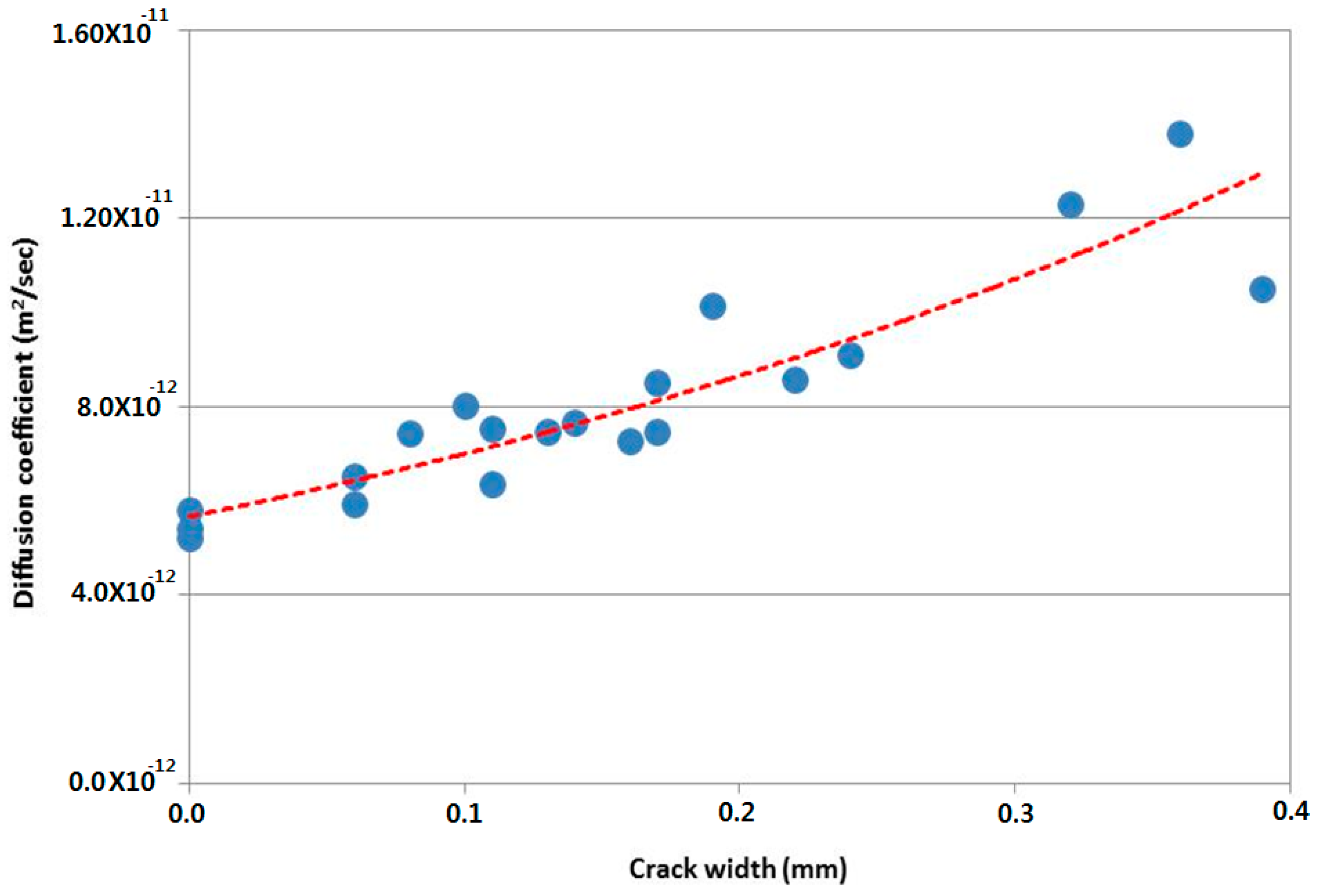
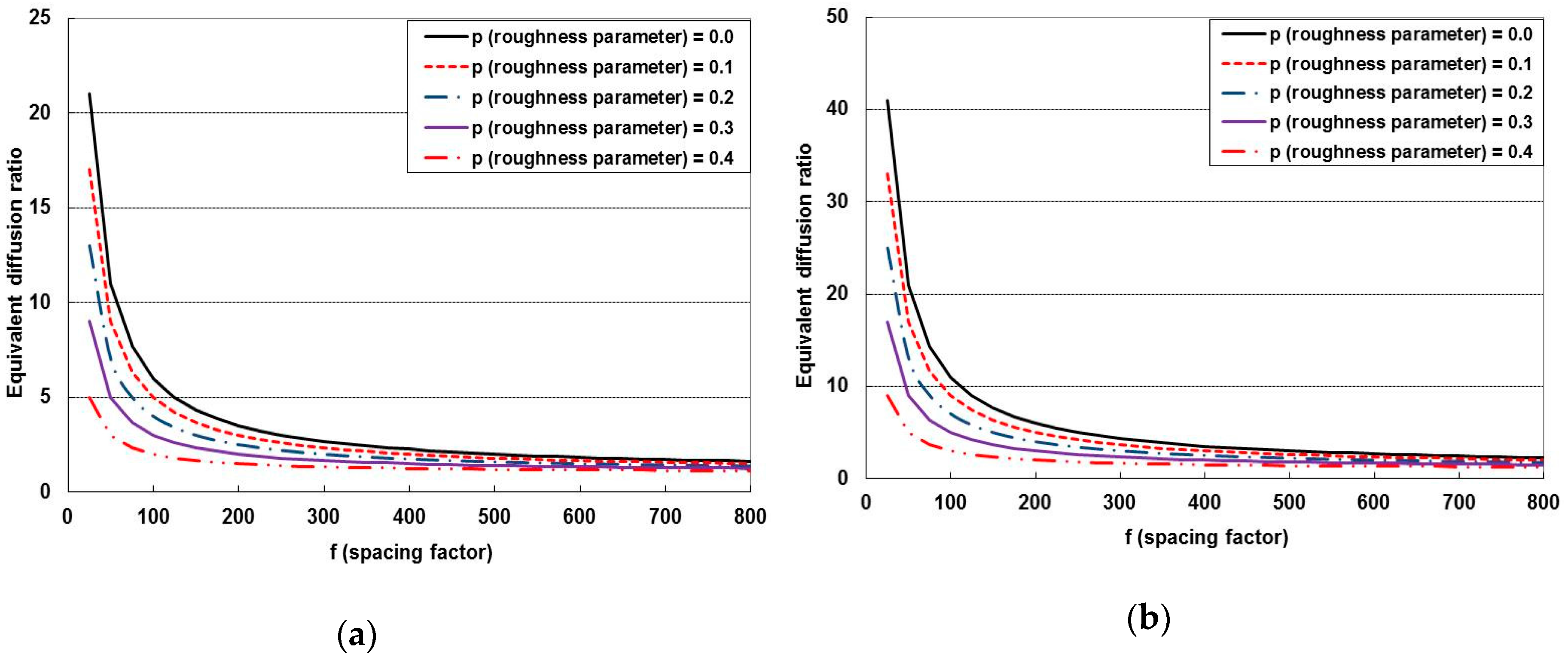
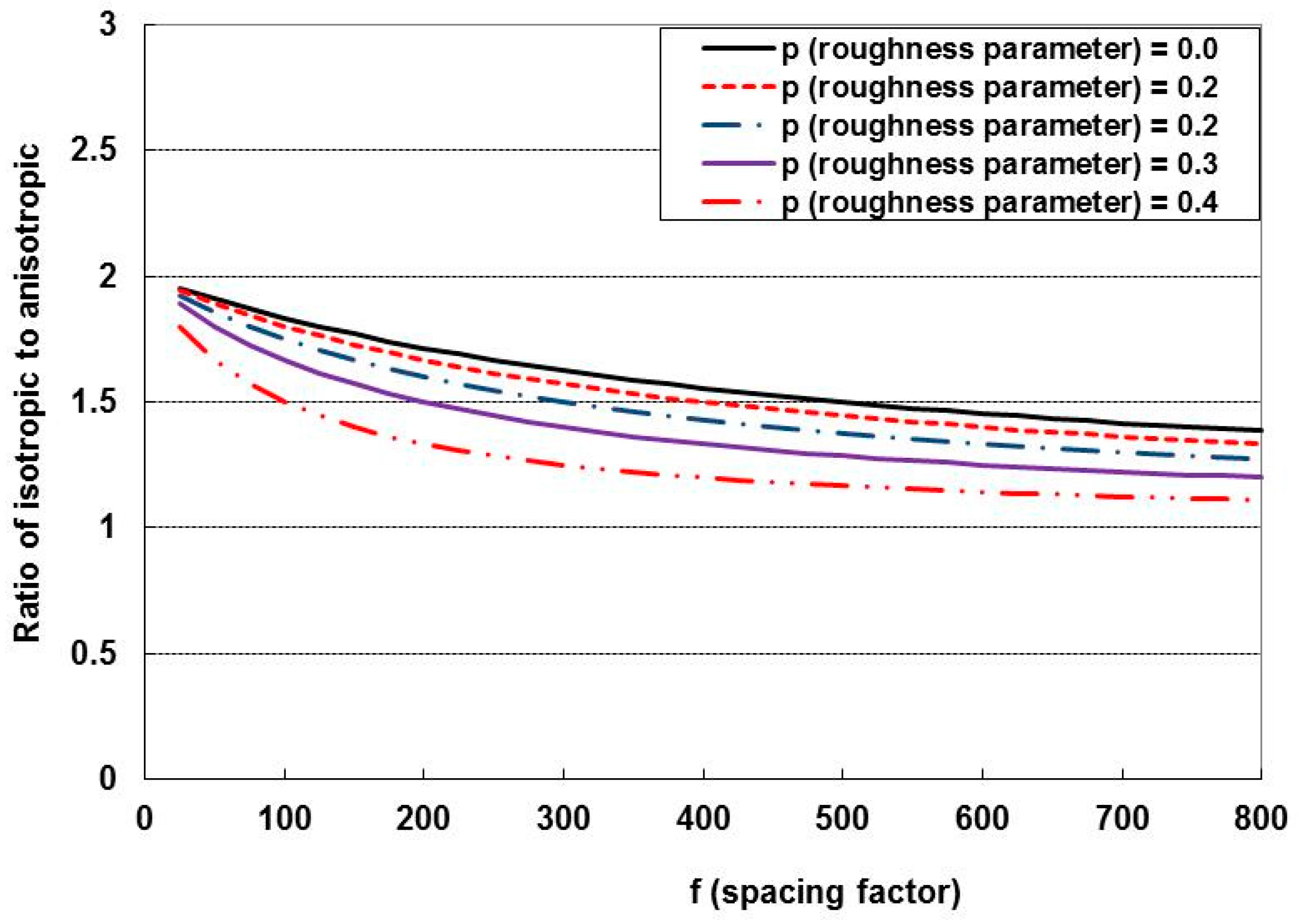
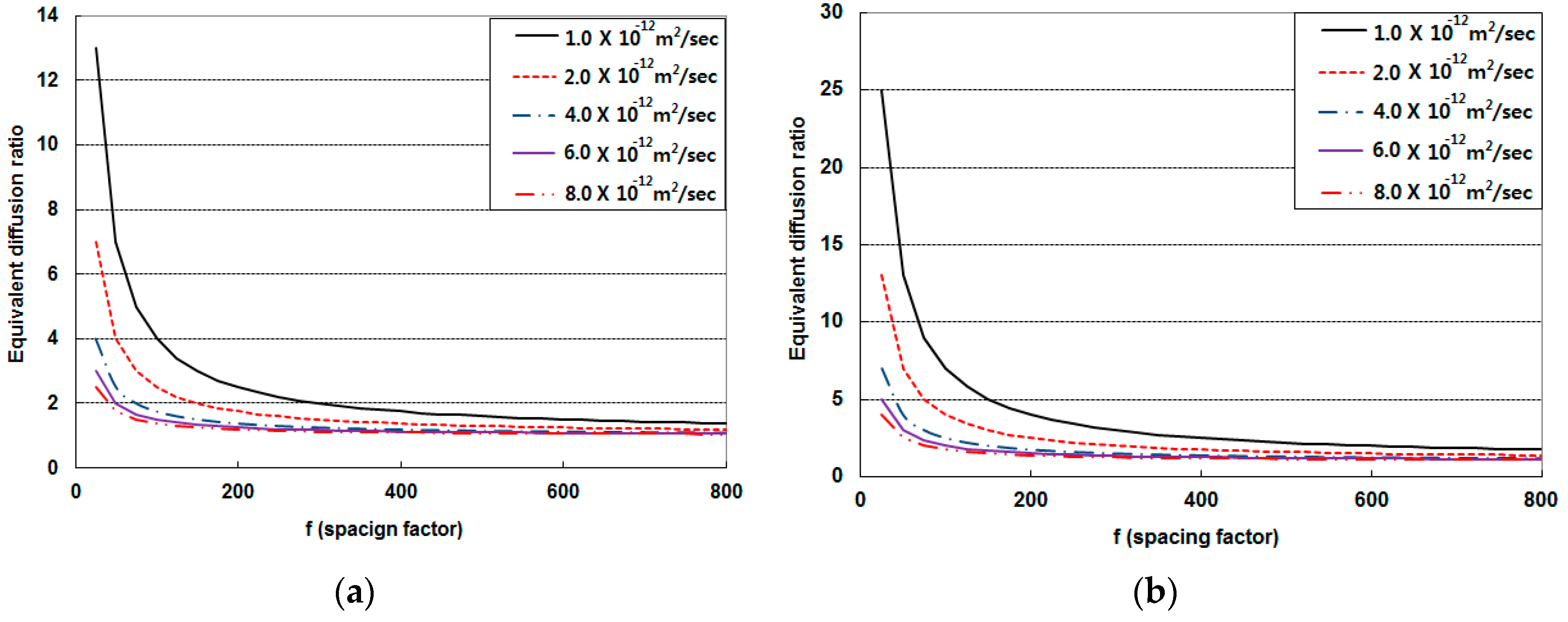

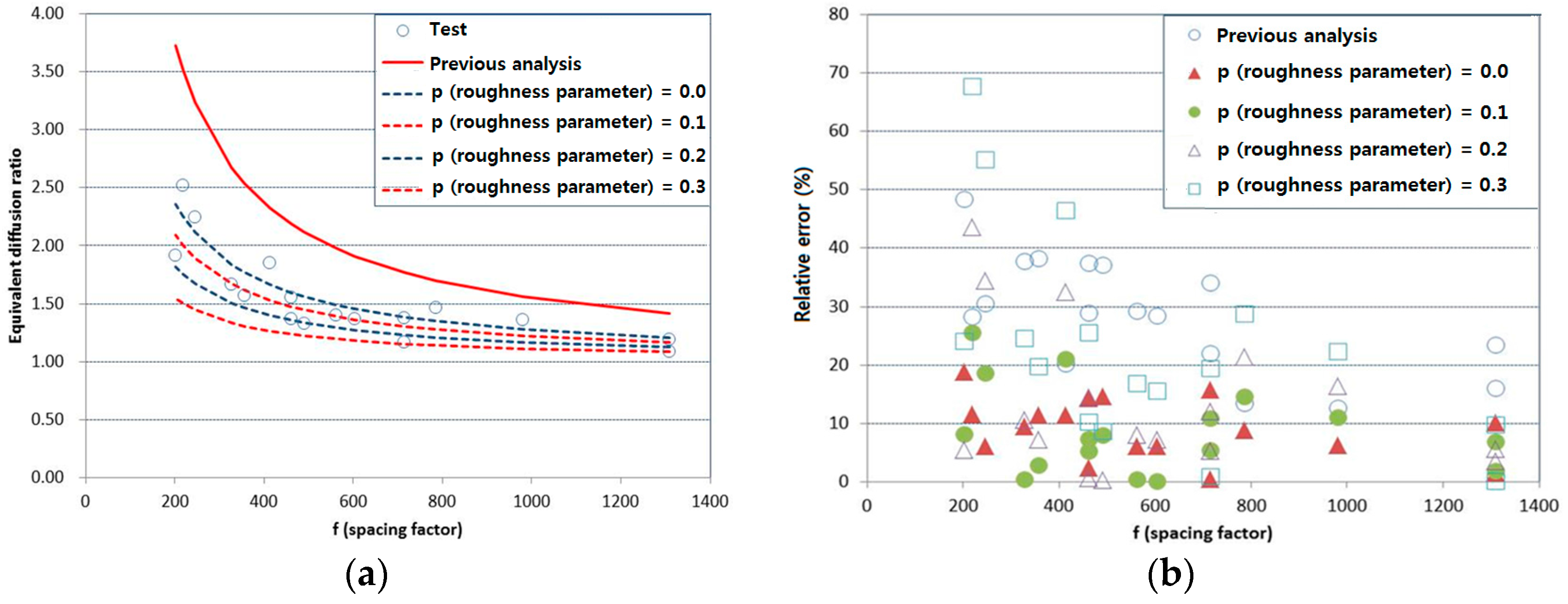
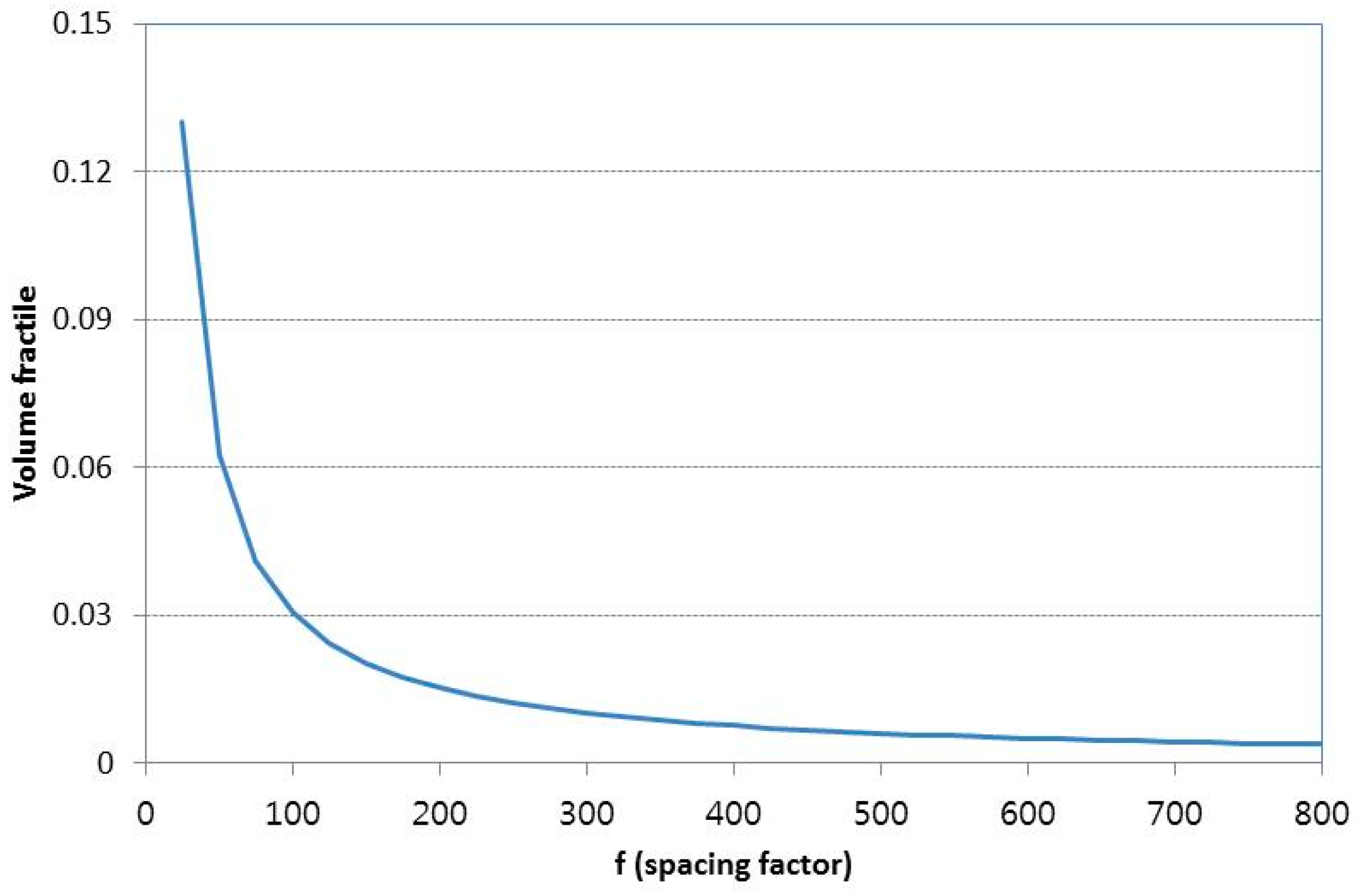
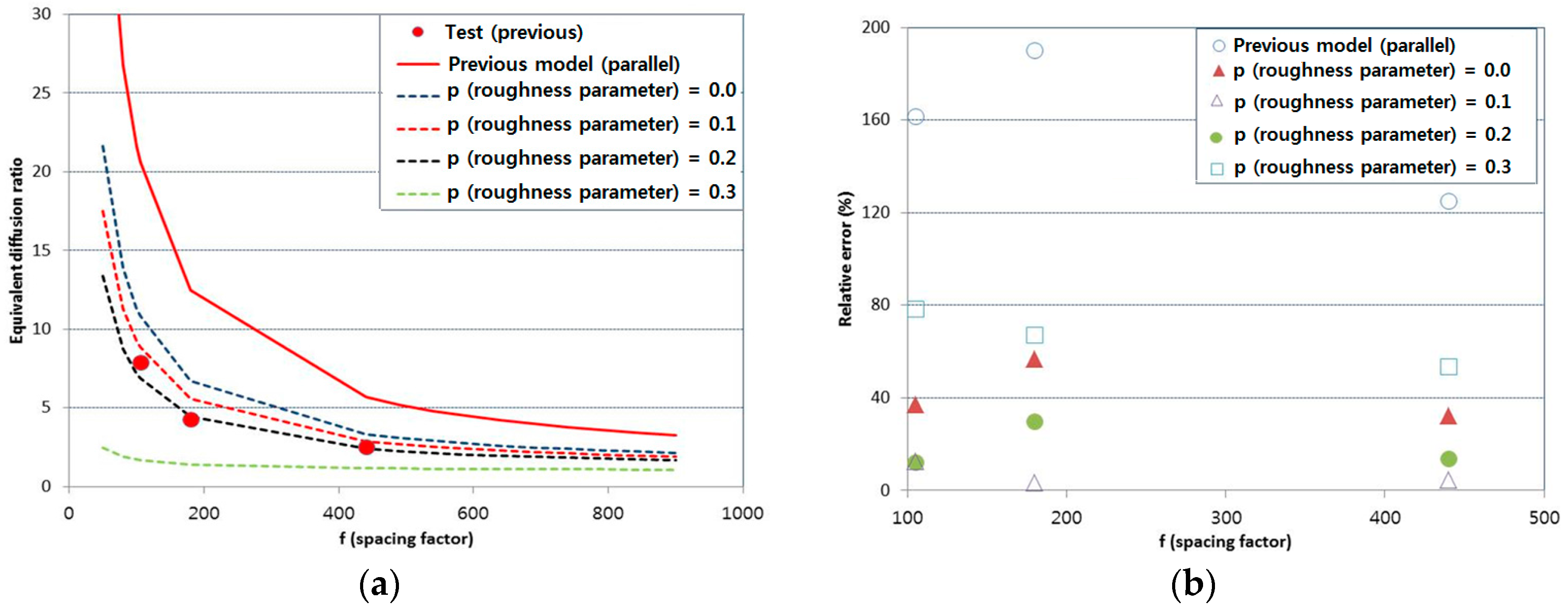
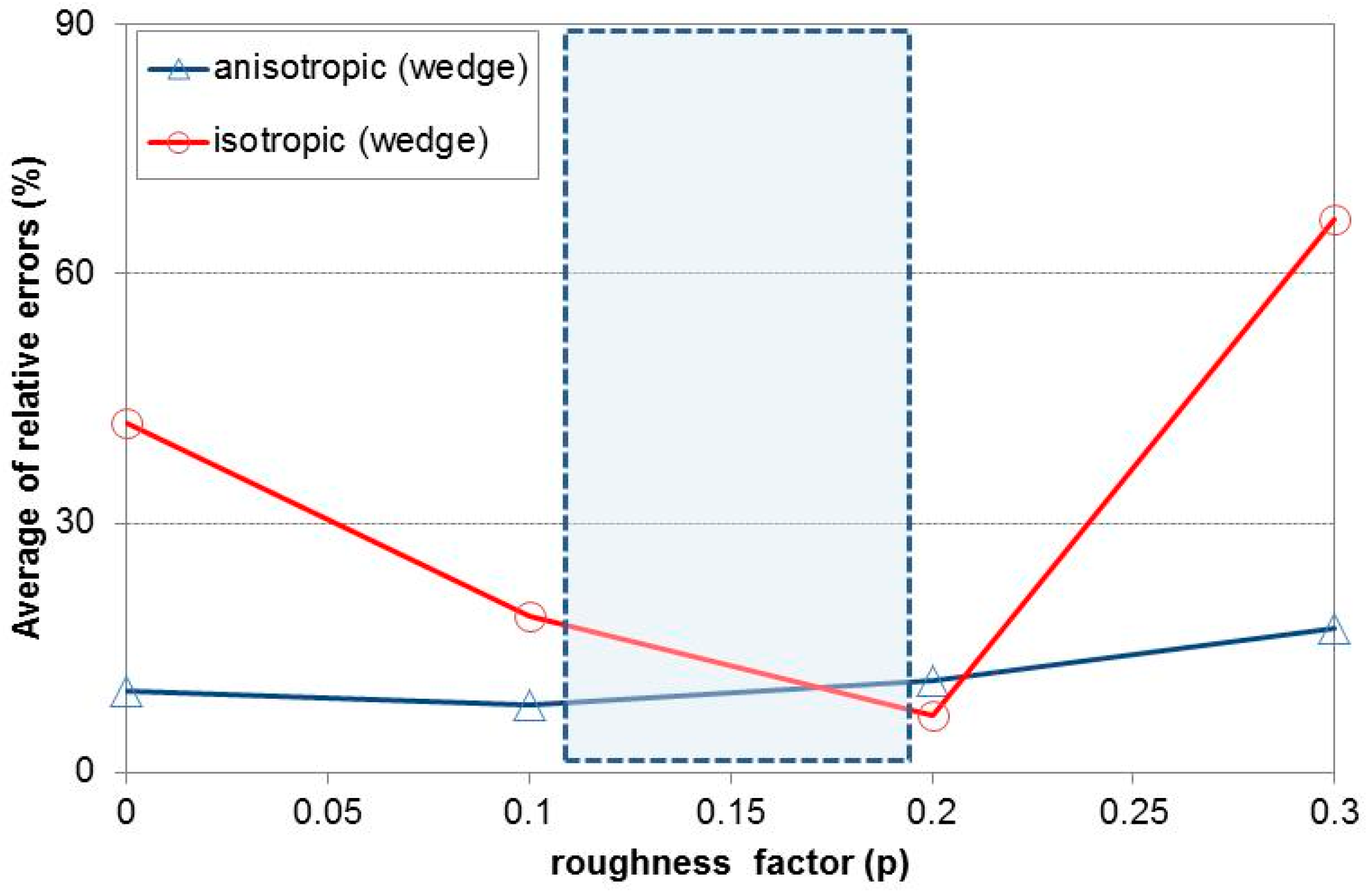
| w/c | S/a (%) | Gmax (mm) | Unit Mass (kg/m3) | Chemical Ad (mL) | ||||
|---|---|---|---|---|---|---|---|---|
| W | C | S | G | AE 1 | WRA 2 | |||
| 0.44 | 44.5 | 25 | 179.0 | 406.9 | 787.8 | 982.9 | 17.3 | 1951.0 |
| Item | Chemical Composition (%) | Physical Properties | ||||||||
|---|---|---|---|---|---|---|---|---|---|---|
| Type | SiO2 | Al2O3 | Fe2O3 | CaO | MgO | SO3 | Ig. Loss | Specific Gravity (g/cm3) | Blaine (cm2/g) | |
| OPC | 21.96 | 5.27 | 3.44 | 63.41 | 2.13 | 1.96 | 0.79 | 3.16 | 3214 | |
| Item | Gmax (mm) | Specific Gravity (g/cm3) | Absorption (%) | Fineness Modulus | |
|---|---|---|---|---|---|
| Type | |||||
| Fine aggregate | - | 2.56 | 1.08 | 2.82 | |
| Coarse aggregate | 25 | 2.63 | 0.81 | 6.81 | |
| Measured Crack Width (mm) | Diffusion Coefficient (m2/s) | Measured Crack Width (mm) | Diffusion Coefficient (m2/s) |
|---|---|---|---|
| 0 | 5.80 × 10−12 | 0.14 | 7.66 × 10−12 |
| 0 | 5.42 × 10−12 | 0.16 | 7.29 × 10−12 |
| 0 | 5.22 × 10−12 | 0.17 | 7.48 × 10−12 |
| 0.06 | 5.95 × 10−12 | 0.17 | 8.51 × 10−12 |
| 0.06 | 6.52 × 10−12 | 0.19 | 1.02 × 10−11 |
| 0.08 | 7.45 × 10−12 | 0.22 | 8.58 × 10−12 |
| 0.1 | 8.04 × 10−12 | 0.24 | 9.11 × 10−12 |
| 0.11 | 6.38 × 10−12 | 0.32 | 1.23 × 10−11 |
| 0.11 | 7.55 × 10−12 | 0.36 | 1.38 × 10−11 |
| 0.13 | 7.48 × 10−12 | 0.39 | 1.05 × 10−11 |
© 2017 by the authors. Licensee MDPI, Basel, Switzerland. This article is an open access article distributed under the terms and conditions of the Creative Commons Attribution (CC BY) license ( http://creativecommons.org/licenses/by/4.0/).
Share and Cite
Yang, K.-H.; Singh, J.K.; Lee, B.-Y.; Kwon, S.-J. Simple Technique for Tracking Chloride Penetration in Concrete Based on the Crack Shape and Width under Steady-State Conditions. Sustainability 2017, 9, 282. https://doi.org/10.3390/su9020282
Yang K-H, Singh JK, Lee B-Y, Kwon S-J. Simple Technique for Tracking Chloride Penetration in Concrete Based on the Crack Shape and Width under Steady-State Conditions. Sustainability. 2017; 9(2):282. https://doi.org/10.3390/su9020282
Chicago/Turabian StyleYang, Keun-Hyeok, Jitendra Kumar Singh, Bang-Yeon Lee, and Seung-Jun Kwon. 2017. "Simple Technique for Tracking Chloride Penetration in Concrete Based on the Crack Shape and Width under Steady-State Conditions" Sustainability 9, no. 2: 282. https://doi.org/10.3390/su9020282
APA StyleYang, K.-H., Singh, J. K., Lee, B.-Y., & Kwon, S.-J. (2017). Simple Technique for Tracking Chloride Penetration in Concrete Based on the Crack Shape and Width under Steady-State Conditions. Sustainability, 9(2), 282. https://doi.org/10.3390/su9020282








